IRB Profiles
-
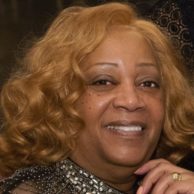
Savage, Deborah
Fearless Fighter
Savage,
Deborah

Savage, Deborah
Fearless Fighter
Deborah Savage arrived at Johns Hopkins in 1993 not knowing of the impact she would have on campus. Working on the Homewood campus, she performed a number of roles from serving as the IT manager for Student Technology Services to helping people with disabilities along with faculty, staff, and especially students, navigate the fast-moving digital landscape, including what was then known as the World Wide Web. Before long, Savage found herself seeking a way for the university’s custodial and food service workers to benefit from the same tech training that was being offered to other Hopkins employees. With the approval of university leaders, she was able to start a training program for the workers in the form of a weekend pilot program run by the BFSA. It is this work that Savage is most proud of. But it is the light she shined on employment disparities and general uneasiness among black faculty and staff at JHU that she holds dear to her heart.
In addition to her IT work, Savage served on a number of committees and working groups, including those to improve services for the disabled. She is also a past president of the Black Faculty and Staff Association where she led the group’s annual back-to-school clothing drive and Juneteenth celebration. As head of the BFSA, Savage hosted women’s luncheons, roundtable discussions and meetings with the university’s leadership.
It was Savage who brought to the attention of the leadership the lack of diversity on the walls of the university. The university, Savage argued, needed to do more to celebrate the contributions of people of color to Johns Hopkins. The leaders agreed, and with their blessing, a previous BFSA project known as the “History of African Americans at Johns Hopkins” was reborn as “The Indispensable Role of Blacks at Johns Hopkins.”
A three-term president of the BFSA, Savage was instrumental in securing annual meetings with the university’s presidents to discuss inequities in hiring and retaining African Americans. Those meetings continue to be held every year.
On many occasions, Savage’s work extended beyond the public to the private. It was not uncommon, she says, for faculty and senior staff, to confide in her their feelings of isolation as one of few people of color on campus. Ever patient, Savage would offer wise counsel telling her colleagues to stay strong and be patient. Sometimes she would say nothing. “We would just walk,” she said. She became the go-to person for black faculty and staff.
Savage, who retired last year after 23 years of service with JHU, looks back on her career at Hopkins with pride. She acknowledges that she sometimes feared the battles she took on, particularly those related to improving the climate for people of color at Hopkins. The institution, she said, was a difficult place to navigate as an African American. But she said, “You can surround yourself in support or you can suffer in silence.”
-
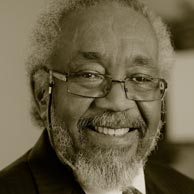
Savage, Vernon
Champion of Change—Black Faculty and Staff Association Founder
Savage,
Vernon

Savage, Vernon
Champion of Change—Black Faculty and Staff Association Founder
The Black Faculty and Staff Association (BFSA) came together, as so many advocacy groups do, over lunch and a conversation. Lunch was at the Polo Grill, then a restaurant across from Homewood Field, and the people who had gathered to talk were black senior staff members concerned about the lack of support for people of color at Johns Hopkins. Toni Moore-Duggan, one of the participants, recalled how that lunch and subsequent discussions among the staff members led to their decision in 1995 to establish the BFSA. “After graduating from Johns Hopkins and while working there, it became evident that there was no voice or forum for black people having difficulties here,” said Moore-Duggan, a certified nurse practitioner who worked at the institution for years.
At first, Moore-Duggan said, she and the other staff members were not sure if anyone would buy into efforts to create a forum for people of color, but they did. Seventeen years later, the group is not only going strong but has expanded its mission: to help foster a culture of collaboration by promoting and enhancing the identity and professional welfare and growth of faculty, staff and students through collaborations, community service, education, research and cultural activities. The BFSA has also charged itself with being a crucial resource for the continued success of Johns Hopkins through the development and cultivation of relationships with key leaders of the institution.
Vernon Savage, now retired, was the director of outreach for the JHU Counseling Center. He served two terms as president of the BFSA. During his first term, in 1998, Savage began the process of opening the organization to faculty and staff on the East Baltimore campus. Savage’s personal history is one of losing and then finding his direction. After graduating from Baltimore Polytechnic Institute, he worked at a variety of jobs and in the Marine Corps Reserve. During this time, he became involved in drug dealing and was imprisoned. With hard work, however, he turned his prison term into a time of growth: He began taking college classes, met a mentor who challenged him to succeed and earned an associate’s degree and a Ford Foundation scholarship for continued higher education. Out on parole, Savage earned master’s and doctoral degrees in clinical psychology and began a career in psychology and higher education administration that spanned more than three decades.
-
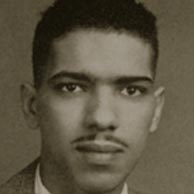
Scott, Frederick Isadore
Rebel with a cultural cause
Scott,
Frederick Isadore

Scott, Frederick Isadore
Rebel with a cultural cause
Growing up in Baltimore, Frederick Isadore Scott rarely encountered an idea he didn’t want to explore or an authority he was afraid to challenge. Born in 1927, he found that the city offered him limited opportunities but provided great support through its close-knit black community. As a student at Frederick Douglass High School, then one of the city’s two public high schools for black students, Scott asserted his ideas about justice by joining political groups, attending labor meetings and coordinating letter-writing campaigns to oppose segregation.
After he graduated from Douglass, his friends assured him that he couldn’t gain entry to the undergraduate program at Johns Hopkins. They dared him to try. He did and he got in. This was in 1945 and no other blacks had ever applied to the undergraduate program, according to the university registrar. The pressure to succeed and the change in culture were intimidating, but not intimidating enough to stifle Scott.
Beyond simply going to classes, Scott dared to change the campus culture by serving in the school’s Honor Commission and helping to found Beta Sigma Tau, the first interracial fraternity in Baltimore and the first to forbid any form of hazing. Although Scott’s education was interrupted by his stint in the Army during World War II, he returned to graduate from Johns Hopkins in 1950 with a degree in chemical engineering.
His career included several years as an engineer for RCA before serving as an editor for scientific and trade journals, including American Laboratory. Over the years, he remained close to the university, helping with recruitment and alumni issues. An alumni group formed to address racial tensions on the campus even adopted his name, calling itself the Frederick Scott Brigade.
Fred Scott died in 2017.
More about Fred Scott
Interview with John Morris as a part of the BFSA History of African Americans at JHU Project
-

Scott-Heron, Gil
Influential “bluesologist,” Voice of a generation
Scott-Heron,
Gil

Scott-Heron, Gil
Influential “bluesologist,” Voice of a generation
Gil Scott-Heron described himself as a blues scientist, a “bluesologist.” Others describe him as an influential poet, musician, recording artist, author and social critic.
He is renowned for his spoken word compositions in the 1970s and 1980s, and his best known works include “The Revolution Will Not Be Televised,” “Winter in America” and “Pieces of a Man.” Throughout his career, he and his collaborators took strong social and political stands, crafting works that fused jazz, blues, soul and other musical styles.
Scott-Heron earned a master’s degree in creative writing from Johns Hopkins University in 1972, though he had never completed an undergraduate degree. He passed away in May 2011.
-

Sims, Lowery Stokes
Museum world boundary-pusher
Sims,
Lowery Stokes

Sims, Lowery Stokes
Museum world boundary-pusher
Lowery Stokes Sims, curator at the Museum of Arts and Design (formerly the American Craft Museum) in Manhattan, shares her expertise in modern and contemporary art with audiences at the museum and in other venues. Before joining the Museum of Arts and Design, Sims served as a staff member of The Metropolitan Museum of Art and then as executive director and president of The Studio Museum in Harlem.
With a particular interest in African, Latino, Native American, Asian American and women artists, Sims has curated more than 40 exhibits at The Metropolitan Museum of Art as well as at the National Gallery of Jamaica, The Cleveland Museum of Art, and the New York Historical Society. A popular lecturer, she has also edited exhibition catalogs and written for Artforum and Arts Magazine.
Sims earned her master’s degree in fine arts at Johns Hopkins University, and her career brings honor to the university’s arts programs.
-
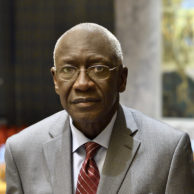
Sise, Lamin J.
United Nations Powerhouse and Legal Stalwart
Sise,
Lamin J.

Sise, Lamin J.
United Nations Powerhouse and Legal Stalwart
Lamin J. Sise’s life and career can be summed up in six words – well-educated, well-traveled, and well-liked. Not bad for a young man who came to the United States seeking to earn an elite higher education that would put him on the path to professional success. And succeed he did. After earning undergraduate, graduate and doctorate degrees from the Johns Hopkins University in Baltimore and the School of Advanced International Studies (SAIS), Sise (pronounced See-Say) went on to earn his LL.B degree from the University of Cambridge in England.
A native of The Gambia in West Africa where he was educated at the primary and secondary levels, Sise attributes his academic and professional success directly to Johns Hopkins, a university that when he arrived there enrolled just a few students of color. Sise had transferred to the Homewood campus from Howard University in Washington, D.C. because he said he wanted a more challenging academic environment, as well as a 24-hour library that would allow him to delve deep into his political science and economics studies. He found that, and then some. While a student at Homewood, Sise was invited to dine at the Baltimore home of former JHU President Milton S. Eisenhower who was said to be so impressed with the student that he arranged to give Sise a generous financial aid package as long as Sise kept a strong GPA. Sise accepted with disbelief and relief. He had arrived in the U.S. with pennies in his pocket and worked three, sometimes four jobs, to pay his Howard, then JHU bills.
Upon completing his education, Sise set out to ensure that JHU’s financial gesture to him as an undergraduate student, was not in vain. To this day, he attributes his successful career to Johns Hopkins – a career in which he was employed by the United Nations for three decades in Geneva, Switzerland and New York. Here he worked in various legal capacities and as senior advisor to former UN Secretary-General Kofi Annan. From 1977 to 1983 Mr. Sise served as Deputy Legal Adviser of the United Nations Conference on Trade and Development in Geneva. From 1983 to 2007, he served in New York in the Office of Legal Affairs, Department of Peacekeeping Operations and in the Executive Office of the Secretary-General. Sise, who has worked in over 100 countries, said he owes his successful career entirely to Johns Hopkins. “Imagine me, a poor African boy who has met with dozens of heads of states and every president from Gerald Ford to Barack Obama,” Sise said. “I would not have been able to do these things in my career without Johns Hopkins.”
-

Smith Jr., Clifford V.
Pioneering engineer
Smith Jr.,
Clifford V.

Smith Jr., Clifford V.
Pioneering engineer
Clifford V. Smith, Jr. is no stranger to being a trailblazer. An engineer, and an academic, he was among the few African Americans to obtain a bachelor’s degree in civil engineering from the University of Iowa in 1954. He went on to be one of the first blacks to earn a master’s degree in environmental engineering in 1960, and a doctorate in radiological sciences in 1966, both from Johns Hopkins University.
A native of Washington, D.C., Smith recalls his days in segregated Baltimore as difficult, but fun. At Hopkins, he immersed himself in tough engineering and science classes and taught in the School of Public Health. Rarely, did he run into any other black students or professors at Hopkins, though he knew he was not alone.
Smith parlayed his education into a successful career as an engineer in academia, government and industry. In government, he served in high-level positions with the U.S. Nuclear Regulatory Commission and the U.S. Environmental Protection Agency. In industry, he worked for Bechtel, the engineering and construction firm. In academia, Smith held senior leadership positions within the Oregon State System of Higher Education, including vice president of administration at Oregon State University, special assistant to the chancellor of the State System for Science Technology and Economic Development, director of the Council for Advanced Science Engineering Education, and Research for Industry.
From 1986 to 1990, Smith was the chancellor of the University of Wisconsin-Milwaukee, the first African-American in the University of Wisconsin system to hold such a post. Before UW-Milwaukee, Smith held academic positions with the City College of New York, Tufts University, the University of Massachusetts Amherst, and the University of Connecticut. In 1990, he was appointed president of the General Electric Foundation, the philanthropic arm of GE. He retired from General Electric in 1997.
Smith credits his distinguished career, in part, to his decision to enroll in the engineering master’s program at Hopkins. He was a young man working in the Pennsylvania Department of Health in Philadelphia when he learned that his job would pay for a portion of his graduate school expenses. He did some research and found that the program he was interested in was only offered at Hopkins and Harvard. He chose Hopkins. The decision paid off. He selected Hopkins again for his Ph.D., attending classes and studying with two young children at home, and one on the way. His youngest daughter was born at Johns Hopkins Hospital in 1963.
Next to his father who was also an engineer and Iowa alum, Smith said he owes his ability to complete his doctorate in a field where there were not many blacks, to his wife of 61 years, Nina Marie Singleton who like him, was a native of Washington, D.C.
-
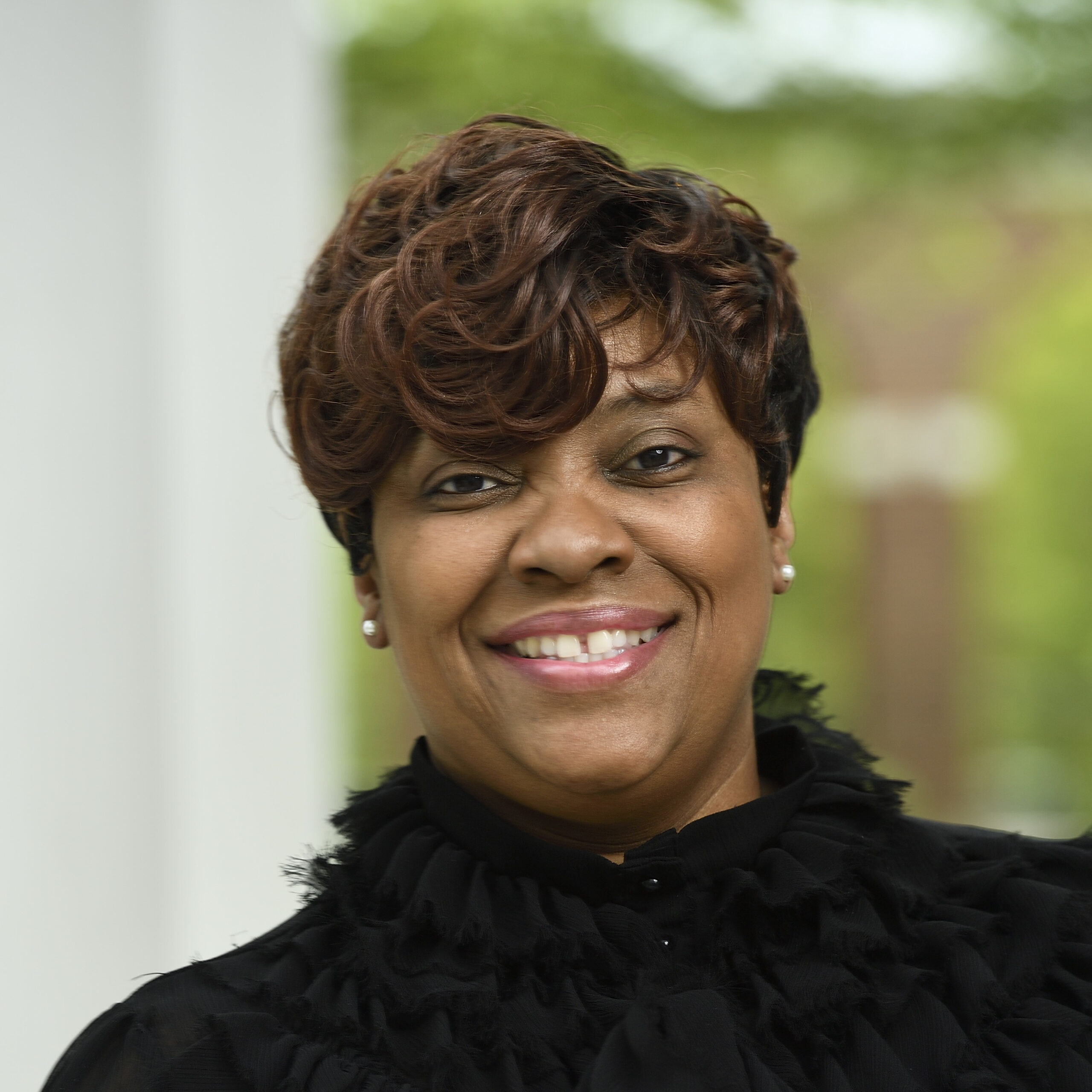
Smith, Lorraine
Advocate for Equity
Smith,
Lorraine

Smith, Lorraine
Advocate for Equity
Lorraine Smith joined the Department of Mathematical Sciences (MathSci) in the Whiting School of Engineering in 1995 as an administrative secretary (just in time to attend one of the first Black Faculty and Staff Association [BFSA] meetings, which she would preside over as president twenty-five years later). One of her first assignments in MathSci was to develop a program for course evaluations. The program was so successful that it was adopted by the University to be used by all undergraduate students on the Homewood campus for the next few years.
Smith has attended many marches, not only in Baltimore and Washington D.C., but in other cities experiencing racial unrest. “I am an advocate for my people, and for equal rights,” Smith proudly asserts. As the President of the BFSA, she orchestrated the June 18, 2020, march on the Homewood campus advocating for change, equal pay for women and Black employees, more Black faculty, and better opportunities for advancement at Johns Hopkins. More than two hundred people—including faculty, staff, students, and local residents—participated in the peaceful demonstration, held in the midst of the Covid-19 pandemic and nationwide protests after the murder of George Floyd in Minneapolis. At the time, Smith noted that she wanted “members of our community to have an opportunity to address their feelings about what’s going on around the country and around the world to end systemic injustice and racism.” She acknowledged that “These problems are unfortunately embedded in many institutions, including Johns Hopkins, but we’re here to show that a change is going to come, and it needs to come from the top down.”
“I needed people to know that we’re not treated fairly. I’m just asking for a shot at what other people are given. It was a peaceful protest. We just wanted to put it out there that things are happening for others differently than they are happening for us,” Smith explained. During the pandemic she created other opportunities to keep BFSA members connected. With most people working from home, BFSA leadership established a “Thursday check-in,” where people could login online and talk freely about whatever they were experiencing. “We had happy hours and played games just to keep people motivated and engaged.”
Smith has been active with the executive board of the BFSA for ten years, first as an unofficial events director, then East Baltimore caucus chair, and then president. Smith lobbied to have Juneteenth declared a university paid holiday by sending President Ron Daniels an email, encouraging him to make Johns Hopkins “a trendsetter,” and in 2020, Daniels declared a half-day holiday to mark Juneteenth. Then, the next year, President Daniels made Juneteenth a full-day paid holiday, moments before US Congress made it an official paid federal holiday. Each year various Juneteenth events occur around the university, with Smith helping to coordinate the major celebratory occasions.
Equal pay for staff, hiring practices, mandatory training for managers and supervisors, and recruitment of minority students and faculty remain Smith’s objectives for the BFSA. She is also the staff representative for her department’s IDARE (Inclusion, Diversity, Anti-Racism, and Equality) committee. “We’re just trying to make Hopkins more culturally diverse,” Smith said, emphasizing the importance of “being welcoming to all people so that they feel comfortable coming to work. People need to be respectful of others’ positions and the roles they play. We’re all working together for a common goal.” Smith is true advocate for change.
-
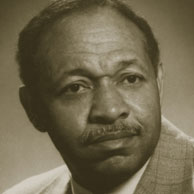
Smoot, Roland Thomas
Healer of people and of the health care system
Smoot,
Roland Thomas

Smoot, Roland Thomas
Healer of people and of the health care system
In dedicating his career to enhancing health care for blacks and mentoring the next generation of physicians, Roland Thomas Smoot improved the health care system itself. His friend and fellow Johns Hopkins colleague Levi Watkins described Smoot as a local “Rosa Parks.”
The son of a postal worker and domestic worker, Smoot demonstrated an early aptitude for math and science, and after Army service during World War II, he graduated with honors from Howard University’s undergraduate and medical schools. While on staff at the all-black Provident Hospital, Smoot began attending Saturday grand rounds at Johns Hopkins Hospital to share knowledge and ideas with the physicians there. His expertise in internal medicine drew the attention of Johns Hopkins medical school professor Benjamin Baker, who, in 1963, invited Smoot to become the first black physician to secure admitting privileges and a faculty position at The Johns Hopkins Hospital.
Described by Watkins as a “quiet, gentle, committed and determined person,” Smoot enriched the health care system by continually expanding opportunities for black medical professionals. He continued amassing “firsts” throughout his career, including becoming the first black person elected president of the Medical and Chirurgical Faculty of Maryland. He died in 2006.
-

Solomon, Sharon
Role Model for Academic Medicine
Solomon,
Sharon

Solomon, Sharon
Role Model for Academic Medicine
Sharon Solomon decided she wanted to be a doctor after watching “The Body Human” on television when she was five years old. “It seemed miraculous that a doctor could affect significant change in someone’s life through science,” she recalled. Now one of the world’s foremost retinal surgeons, her many champions shower praise for Dr. Solomon’s own achievements. Wilmer Eye Institute Director Emeritus Dr. Morton Goldberg considers Solomon “a superb role model for all of our trainees and, indeed, our colleagues on the faculty. She is highly productive in all aspects of academic medicine: clinical care, research, teaching, and administration.” And, he notes, “Her demeanor and her ethical comportment are outstanding.”
Solomon attended Harvard College, then University of California, San Francisco, for medical school. “I fell in love with ophthalmology during third year” she recalled. “The first time I was involved with retinal surgery was like meeting the person you’re going to marry. I knew this was what I was going to do for the rest of my life.” By the time she had finished her surgical residency at UCSF, Solomon knew she wanted to pursue academia and secured a fellowship at “the mecca for ophthalmology,” the Wilmer Eye Institute, Johns Hopkins School of Medicine. The attraction was “not just seeing challenging patients,” she explained, “but training the next generation and feeling that I could give back as a young faculty member. There are challenges with navigating the ‘system,’ and trainees are much more likely to approach a younger faculty member with questions and to seek guidance”
Solomon accepted a faculty position after her fellowship, in 2002, and has been navigating the system ever since. “The pressure of trying to balance a productive clinical career while pursuing research interests and forging the collaborations to make that science impactful is a constant challenge. Academic productivity in terms of publications and dissemination has traditionally been the holy grail by which promotion and tenure are determined,” she explained. In 2006, Solomon was named the Katharine M. Graham Professor of Ophthalmology and later became the first African American to be promoted to full professor in the history of the Wilmer Eye Institute. Grateful patient benefactors have enabled Solomon to set up novel research projects and programs to coordinate with colleagues to conduct basic research on the etiology of idiopathic macular holes, her surgical specialty. The effort has since evolved into a nationwide study funded by the National Eye Institute, with Solomon as principal investigator. “That’s one of the benefits of being at Johns Hopkins. The generous support of patients and the collaborative nature of colleagues enable one to pursue creative ideas.”
“One can never lose sight of the academic mission,” Solomon acknowledged. “Regardless of race, regardless of gender, at a place like Hopkins, one puts her nose to the grindstone and does what must be done. After twenty-two years, I came up for air and realized, ‘my goodness, I really have gone through a lot, but I made it.’ I still enjoy the environment, and I’m thriving here. It ends up being a happy story.”
-

Spellman, Frank
Pioneering Retinal Surgeon, Gracious Mentor
Spellman,
Frank

Spellman, Frank
Pioneering Retinal Surgeon, Gracious Mentor
Frank Spellman chose Johns Hopkins for his undergraduate studies in 1968 because of its reputation as a springboard to a first-rate medical education. As the son and grandson of physicians, Spellman recognized early that medicine was his vocation, as did many of his classmates—he remembers that almost half of them were premed. Having grown up during the height of the civil rights movement, he wished to serve those who had marched, been bitten by dogs, and who had risked their lives to give opportunities to his generation. It was an exciting time to be on the Homewood campus: the Black Student Union had just been formed and Spellman helped to shape its programs and became involved in student government. Drs. Freda C. Lewis-Hall and Emerson Randy Hall, Jr. recall that “even in those early years we knew that Frank would be an outstanding distinguished leader. As a student he led many of the activities of the Black students on campus.” They also note that Spellman “was an intercollegiate athlete, the first African American to be a house master, and always available to counsel and mentor.” Dr. Ronald Jones has similar memories of his freshman year, in 1970. “While everyone seemed to be buried in their books, in the library, and in classes to get through, Frank made sure the students in my year were able to feel comfortable and were confident they could handle the load.”
During his junior year, a severe viral infection landed Spellman in Johns Hopkins Hospital for six weeks. The experience had a profound effect on the ambitious premed student. His lead physician, Dr. Philip Tumulty, Spellman recalls, provided a role model for the kind of doctor he wanted to be, one “who transcends ethnicity and religion” and “knows how to connect with patients.” Tumulty expressed interest in Spellman’s plans and cautioned that his “work ethic needed to line up with his aspiration” to attend a great medical school. He convinced Spellman to give more emphasis to academics and less to social and political concerns. Spellman took Tumulty’s advice and secured his medical degree at the University of California San Francisco, followed by a residency in ophthalmology at Harvard and a fellowship in retinal surgery at the Bascom Palmer Eye Institute.
Returning to his native Washington, DC, Spellman opened a private practice limited to retinal diseases and surgery, the first African American to initiate and sustain such a practice in the United States. He was also an attending physician and director of the retinal service for many years at Howard University Hospital, and vice chairman, retinal surgeon, and senior attending ophthalmologist at the Washington Hospital Center. Determined to work with the poor as well as the privileged, he rejected positions where Medicaid patients could not be seen. Spellman was elected by his peers as a ”Top Doc” in the Washington, DC, area multiple times, including the last four years of his career. His friend Dr. Lewis-Hall stresses Spellman’s “impeccable reputation” and notes that Spellman treated patients “from all over the world as well as the people of color within the DC area. He is regarded as a great mentor, and remains committed to educating and training medical students, residents, and fellows.”
Indeed, as a regular attendee at Johns Hopkins BSU alumni’s annual Fred Scott Brigade dinners, Spellman uses the opportunity to meet and mentor undergraduates on the Homewood campus. In 2018 he met Myron Houngbedji, class of 2020, himself an aspiring retinal surgeon. Houngbedji recalls that Spellman “gave me valuable insight into the field and graciously invited me to shadow him in his Retina Group of Washington office in Capitol Hill.” Houngbedji “was amazed by his patience and professionalism. The manner by which he establishes trust and connects with his patients is something that I want to emulate with my own patients in the future. As a Black man, it was incredibly inspiring to be able to see myself in such a great physician.” Frank Spellman, who retired in 2020, has achieved the goals that brought him to Johns Hopkins, and still inspires others to realize theirs.
-
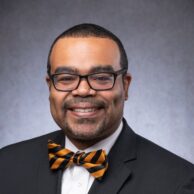
Sydnor, Charles III
Politician for the People
Sydnor,
Charles III

Sydnor, Charles III
Politician for the People
Maryland State Senator Charles Sydnor III discovered his political gifts as an undergraduate at Johns Hopkins. A native of Baltimore, he quickly became active with the Black Student Union, serving first as its education chair, which led to a job helping the Office of Admissions recruit African American students from city high schools. By his senior year he was elected president of the BSU. A highlight of that tenure was inviting Black Panther Party co-founder Bobby Seale to a packed Shriver Hall, in February 1996. He also supported a sit-in protest at the Eisenhower Library seeking recognition of Black History Month. “It was an interesting time to be at Hopkins,” he mused.
Sydnor also developed a passion for history at Hopkins and was particularly drawn to learning about the civil rights movement. For his thesis, he wrote about one of the first attempts to desegregate Johns Hopkins University in the 1930s. While doing that research, he learned about Fred Scott, the university’s first African American graduate.
“As president of the BSU, I had the opportunity to meet some of our older alums,” he recalled. “They had just started having this annual dinner and invited me and the chairs of some of the other Black organizations. They made me feel right at home. It was an opportunity to meet the founders of the Black Student Union and learn about that time in the history of the school. I think they valued my presence because I knew some of the earlier history,” Sydnor explained. “At the time, they weren’t called the Fred Scott Brigade—his story had yet to be told. When I shared my research with them about Mr. Scott, they invited him to the dinner, and he and his wife attended every year after that. At some point our group honored him by naming ourselves The Fred Scott Brigade.”
After graduation, Sydnor earned a law degree from the University of Maryland. Since 2001, he has been an attorney at Enterprise Community Investment, Inc. in Columbia, MD, which helps provide technical assistance, loans, and/or grants for development, construction, and management of the affordable housing industry. He also became active behind the scenes in local politics and began thinking about how to use his history degree to spark interest in educational policymaking. He was elected to the Maryland House of Delegates in 2014 and was named to replace his state senator when she retired in 2019.
Sydnor grew up in West Hills, the farthest community in the southwest section of Baltimore City near the city-county boundary. “It means a lot to represent my hometown. I tell my constituents that I am the reification of regionalism.” Redistricting now confines Sydnor’s legal representation to Baltimore County but, he says, “I joke with people in Baltimore City that, whatever’s going on, they’ve still got my support.”
-

Theodore, Yvonne
Conflict resolver and curiosity quencher
Theodore,
Yvonne

Theodore, Yvonne
Conflict resolver and curiosity quencher
For Yvonne Theodore, Johns Hopkins University was a place to both work and learn. Even after earning a master’s degree in liberal arts, she continued to enroll in classes to quench her curiosity about subjects ranging from art to law.
When she took early retirement in 2000, she was a special assistant to the provost and director of Affirmative Action and Equal Opportunity Programs. Theodore once described her career at Johns Hopkins by saying that she worked for all JHU schools and programs around the world, wrote federal proposals, investigated and resolved legal cases for the university’s Office of the General Counsel, and “resolved conflicts between virtually every imaginable human category.” Her commitment to justice and equity remains legendary at Johns Hopkins and continues to further the university’s progress in creating a learning community enriched by its diversity.
-
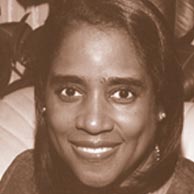
Thomas, Claudia
Lifelong boundary crosser
Thomas,
Claudia

Thomas, Claudia
Lifelong boundary crosser
In her autobiography, God Spare Life, Claudia Thomas describes three major storms in her life: the turbulence of being a college student during the 1960s, the fright of a Category 5 hurricane, and the emotional journey to survive kidney disease through a transplant from her sister.
The faith and strength that enabled Thomas to weather those storms also yielded great accomplishments. While an undergraduate at Vassar College, a 1969 sit-in she led served as a catalyst for the college to establish its Africana Studies department. After graduating from the Johns Hopkins School of Medicine in 1975, Thomas became the first female to graduate from the Yale-New Haven Hospital Orthopaedic Residency Program and the first black female orthopedic surgeon in the United States.
An assistant professor at Johns Hopkins, Thomas now maintains a private practice in Central Florida. In 2008, in honor of her work to encourage and support minorities and women entering the field of orthopedics, Thomas received the annual Diversity Award from the American Academy of Orthopaedic Surgeons.
-

Thomas, Daniel Gary
Front man for jazz studies
Thomas,
Daniel Gary

Thomas, Daniel Gary
Front man for jazz studies
Playing jazz saxophone and flute has taken Baltimore native Gary Thomas around the world. As the Peabody Institute’s director of jazz studies and the Richard and Elizabeth Case Endowed Professor in Jazz, he shares the musical knowledge and experiences gained on those world travels with students and faculty.
Thomas founded the jazz studies degree program at Peabody in 2001 and is the first black person to become a degree program director at the conservatory.
JazzTimes magazine called Thomas one of “the more uncompromising and original saxophone voices” of his generation. He has performed and/or recorded with legendary musicians, including Miles Davis, Pat Metheny, Cassandra Wilson, Wynton Marsalis, McCoy Tyner, Kevin Eubanks, and Ravi Coltrane, and he has been a member of the Herbie Hancock Quartet and Jack DeJohnette’s Special Edition Band. DownBeat magazine named two of his recordings among the best of the 1990s.
Thomas has said, “The students want the teacher to be able to do what he’s trying to teach them to do. I liked being a [band] leader at times. I’m sort of the same thing at Peabody.”
-
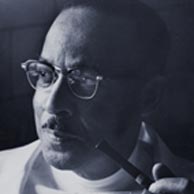
Thomas, Vivien T.
Legendary surgical partner
Thomas,
Vivien T.

Thomas, Vivien T.
Legendary surgical partner
Although a lack of funds kept Vivien Thomas from finishing college, the situation did not dim his determination or intellect. Hired originally to work in Alfred Blalock’s laboratory at Vanderbilt University, he was upgraded to surgical assistant.
Thomas became a key collaborator of Blalock’s, doing surgeries, developing operative techniques and even designing and fabricating surgical equipment. Working as a team, Blalock, pediatric cardiologist Helen Taussig and Thomas devised a groundbreaking heart surgery to correct a congenital heart defect known as “Blue Baby” syndrome.
Thomas’ role in this 1944 breakthrough moment is dramatized in the HBO film Something the Lord Made, and the PBS documentary Partners of the Heart.
Eventually Thomas became the supervisor of surgical research laboratories at Johns Hopkins, a position he held for 35 years. After retiring, he became instructor emeritus of surgery. In 1976, he was awarded an honorary Doctor of Laws degree from Johns Hopkins University.
Thomas, who passed away in 1985, has a permanent place on the Johns Hopkins campus. His portrait hangs directly across from Blalock’s in the lobby of the Blalock Building at The Johns Hopkins Hospital, and a fund named in his honor, the Vivien Thomas Fund, promotes diversity in academic medicine and biomedical science.